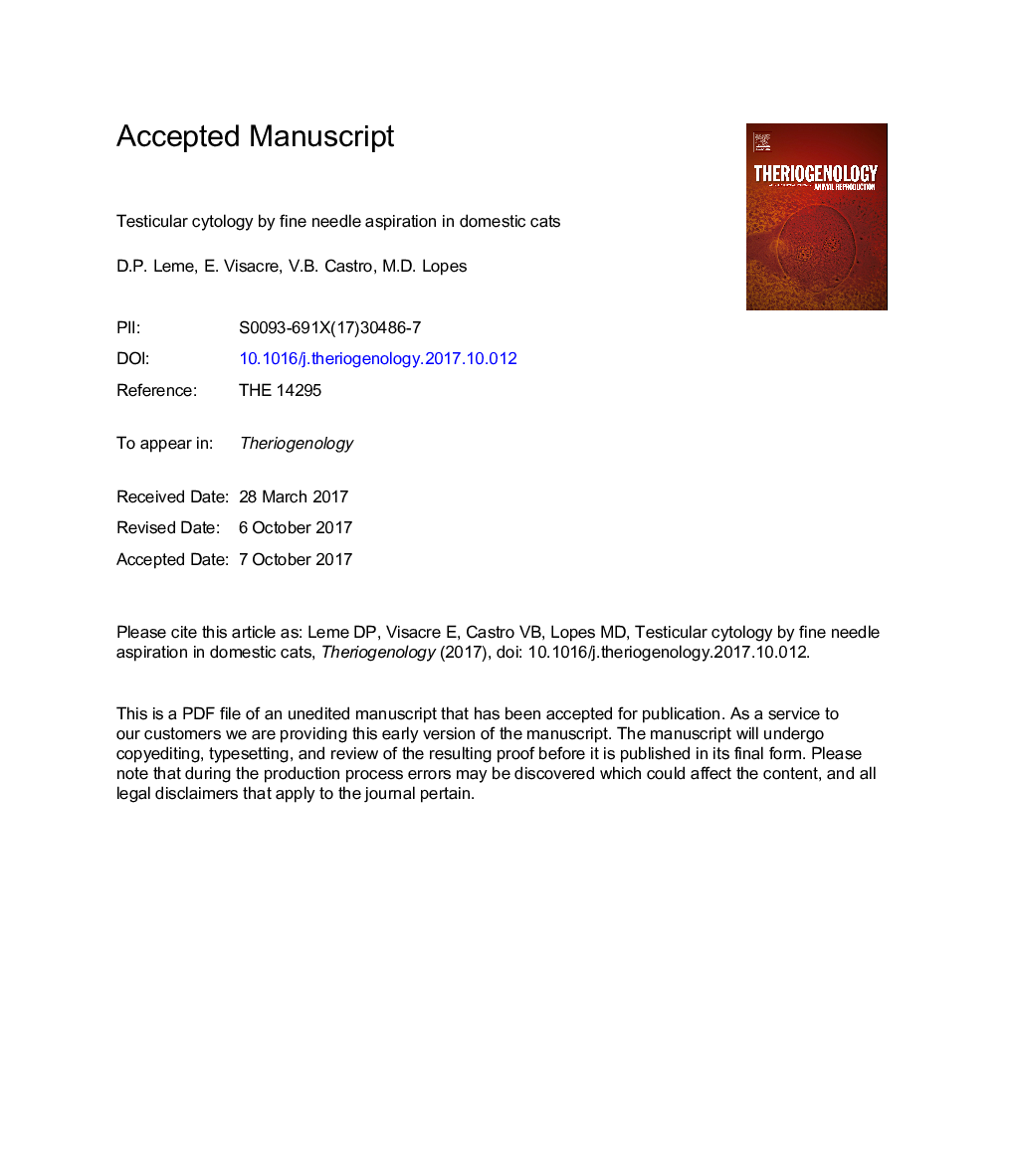| Article ID | Journal | Published Year | Pages | File Type |
|---|---|---|---|---|
| 8427786 | Theriogenology | 2018 | 24 Pages |
Abstract
In cases where semen collection in tom-cats is not possible, FNA of testes is the alternative to evaluate sperm production. Although this technique for the diagnosis of fertility problems has been well discussed in other mammals (men, dogs, stallions), data for domestic cats are limited. Therefore, the aim of this study was to verify the reliability of FNA using needles of small diameters (22G and 29G) in testes of domestic cats of different ages to assess the spermatogenesis status and to present description of germ cells and Sertoli cells for cytological examinations. Thirty-four mixed breed cats aged between four months and two years presented for neutering to a Veterinary Hospital were used in this study. Under general anesthesia, testicular measures and FNA were followed by orchiectomy and imprints of the parenchyma of testes and epididymides. Cats were assigned into 3 groups: (G1) 10 cats aged less than 6 months, (G2) 14 cats aged between 6 months and one year and (G3) 10 cats aged more than one year. Cats weighted between 1.5 and 6.0Â kg. The mean testicular volume (TV cm3) was 0.55 (G1), 1.18 (G2) and 2.66 (G3). Hemorrhages in the needle path were observed in more than 70% of testes. Few samples (4/68) were excluded due to blood contamination. All germ cells and Sertoli cells were identified and quantified in imprint and FNA smears. Incomplete spermatogenesis was observed in cats aged less than 6 months using both techniques (FNA and imprint); therefore, testicular FNA should not be recommended for cats at this age. Complete spermatogenesis was found in 64% of cats aged from 6 months up to one year and in all cats aged more than one year. There were no differences of Sertoli cell Index (SEI) and Spermatic Index (SI) between FNA and imprints of cats older than 6 months. In conclusion, FNA using needles of small diameter in the testes of domestic cats is viable, reliable and can be used as a tool for the analysis of the spermatogenesis status of cats older than 6 months, mainly in cases in which semen collection is not possible.
Related Topics
Life Sciences
Agricultural and Biological Sciences
Animal Science and Zoology
Authors
D.P. Leme, E. Visacre, V.B. Castro, M.D. Lopes,
